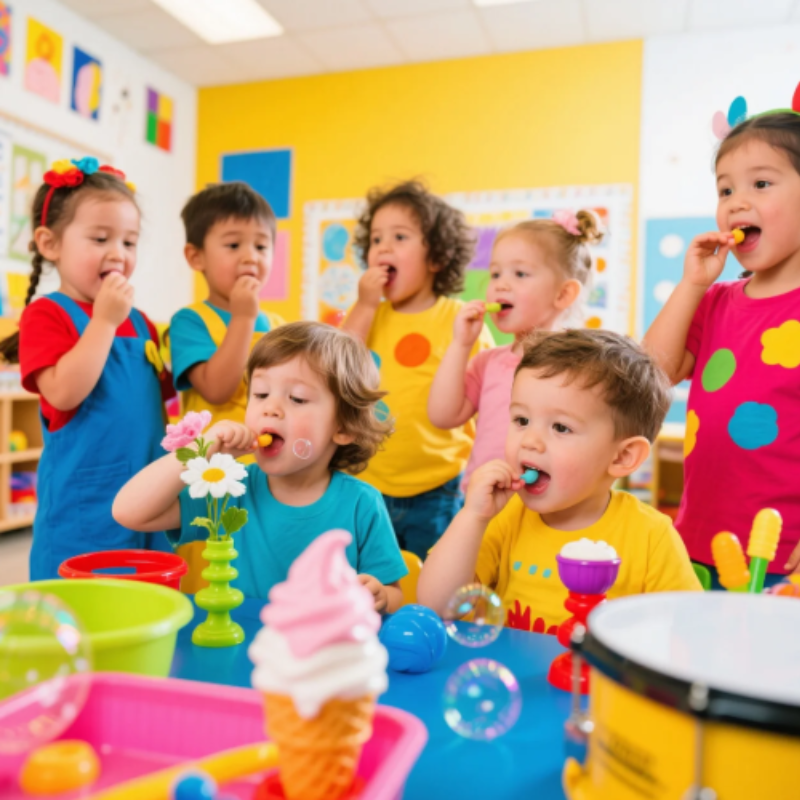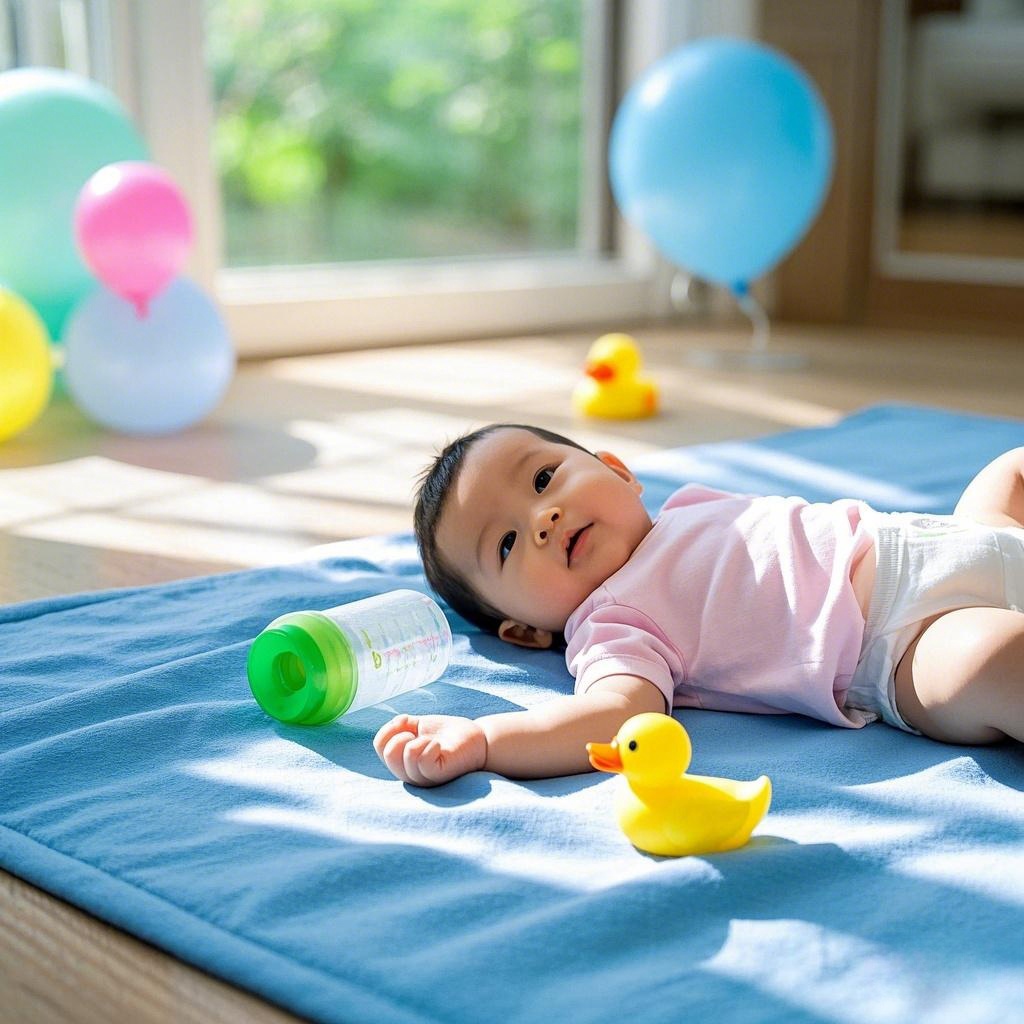As parents, caregivers, or educators, we all want to provide the best opportunities for preschoolers to grow, learn, and develop. One of the most exciting ways to engage young children is through their senses! The five senses—sight, hearing, touch, taste, and smell—are foundational to how children explore and understand the world around them.
In this blog, we’ll dive into how sensory activities can enhance preschoolers’ cognitive, emotional, and physical development. Plus, we’ll share some fun activities for each sense that will keep your little ones entertained and learning.
Why Sensory Exploration is Important for Preschoolers
At a young age, children’s brains are like sponges, soaking up information from their environment. Sensory exploration helps children make sense of what they see, hear, feel, taste, and smell, which is key to their overall growth. These experiences not only stimulate the brain but also support skills like problem-solving, communication, and emotional regulation.
When children engage in sensory activities, they:
- Strengthen their cognitive and fine motor skills
- Improve their communication and language development
- Learn how to express their emotions
- Build creativity and curiosity
Now, let’s break down some easy and fun activities that engage each of the five senses!
1. Sight: Let’s See the World in Color
Sight is one of the most developed senses in children from birth, and it plays a huge role in how they understand and interact with their surroundings. Here are some simple activities to boost visual awareness:
- Color Matching Games: Use colored blocks, markers, or flashcards, and encourage your child to match similar colors. You can make this even more fun by turning it into a game!
- Nature Walks & Visual Scavenger Hunts: Take a walk outside and challenge your preschooler to find certain colors, shapes, or items (like a yellow leaf or a round rock). This fosters visual attention and helps them connect with nature.
- “I Spy” Games: Whether at home or in the park, “I Spy” is a classic game that enhances children’s focus and attention to detail. Ask them to look for objects with specific features—like something green, something round, or something that moves!
2. Hearing: Listen Up!
Children learn so much through sound. From hearing their own voices to recognizing animal noises or familiar music, hearing is essential for communication and social learning. These activities will bring sound into the spotlight:
- Sound Hunt: Hide a few items around the house or outside that make distinct sounds—like a bell, a squeaky toy, or a rustling paper. Ask your child to find them based on the sounds they make.
- Sound Matching Games: Play sounds from different sources—bells, animal noises, water splashes—and encourage your child to match the sound to a picture. This activity helps with auditory discrimination.
- Musical Chairs or Rhythm Activities: Play musical chairs or tap out simple rhythms on a drum to help develop listening and timing skills. Even dancing to music is a great way to build awareness of rhythm and sound.
3. Touch: Feel the World Around Us
The sense of touch helps children understand the physical world and develop motor skills. Here are some hands-on activities to explore textures:
- Sensory Bins: Fill a bin with different materials like rice, beans, fabric, or sand. Let your child explore these materials with their hands to learn about textures and how things feel. You can also add small toys or objects for a fun sensory exploration.
- Blindfolded Texture Exploration: Blindfold your child and ask them to touch various objects, such as a soft pillow, a bumpy rock, or a smooth toy. This enhances tactile awareness and encourages them to use their sense of touch.
- Texture Collages: Gather different textured materials like cotton, felt, paper, and string. Let your child create a collage by gluing them onto paper. This is a great way to explore various textures while also engaging creativity.
4. Taste: Yum! Let’s Explore Flavors
Taste is a sensory experience that preschoolers love to explore. While it’s fun, it’s also an opportunity to develop their understanding of different flavors and textures. Try these activities:
- Taste-Testing: Set up a little taste-testing station with different types of fruits, snacks, or even flavored water. Ask your child to describe the flavors—sweet, sour, salty, bitter—and even guess what they’re tasting!
- Cooking Together: Cooking provides a multi-sensory experience. Let your child help prepare simple meals, which will engage not only their taste but also their touch and smell. Making fruit salad, smoothies, or cookies can be both fun and educational.
- Blindfold Taste Testing: Blindfold your preschooler and give them different foods to taste. Let them guess what it is based on flavor and texture. It’s a great way to encourage descriptive language and broaden their taste experiences.
5. Smell: Let’s Follow Our Nose
The sense of smell is closely linked to memory and emotions. Exploring smells can bring a whole new world to preschoolers. Here are some ideas to bring in scents:
- Scented Playdough or Sensory Bags: Use different scents like lavender, lemon, or cinnamon to make scented playdough or sensory bags. These sensory-rich experiences will spark curiosity and enhance sensory processing.
- Smelling Nature: Take a walk outside and allow your child to smell flowers, leaves, or herbs. Ask them to describe the scents they notice and compare them with each other.
- Guess the Scent: Place different scented items (like cinnamon, vanilla, or citrus peels) in a bag. Let your child guess the scent based on smell alone. This activity sharpens their olfactory sense and makes for an enjoyable challenge!
Combining the Senses: A Multi-Sensory Experience
Why not combine multiple senses into one fun activity? Here are some great ways to engage all five senses at once:
- Sensory Obstacle Course: Create an obstacle course in your living room or backyard with stations for each sense. At one station, your child can feel different textures, at another they can taste something, and at another, they might listen for a specific sound.
- Multi-Sensory Art: Let your child create art using materials that engage multiple senses—like painting with scented markers, using textured paper, and adding different objects to their artwork.
- Sensory Journals: Encourage your child to document their sensory experiences in a simple journal, drawing pictures or writing words about what they saw, felt, heard, tasted, or smelled.
The Benefits of Sensory Activities for Preschoolers
Engaging preschoolers in sensory exploration is more than just fun—it helps build their brains! These activities promote:
- Cognitive Development: Sensory activities help children process information, develop problem-solving skills, and understand cause and effect.
- Emotional Regulation: Sensory play can help children manage emotions, express themselves, and build self-awareness.
- Social Skills: Working with others in sensory activities promotes cooperation, sharing, and communication.
- Creativity: Exploring the senses encourages imagination and creative thinking.
Final Thoughts
The five senses are our windows to the world, and for preschoolers, they are the tools that help them make sense of everything around them. By engaging in sensory activities, children not only learn about the world but also about themselves. So, whether you’re exploring tastes, sounds, or textures, the key is to make it fun and interactive!
Encourage your preschoolers to dive into sensory experiences, and watch as their curiosity and understanding of the world grow. Happy exploring!
💬 What’s Your Verdict?
Which of the five senses activities did your little one enjoy the most? Is your preschooler more into exploring new tastes, or are they drawn to the textures of different objects? Let’s chat in the comments—share your favorite sensory activity and any fun ideas you’ve tried!





